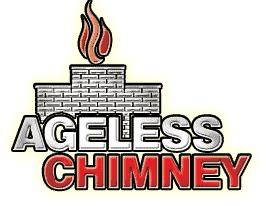Chimney Sweep in Manhattanville, NY
What our clients say




Read About Us
Browse Masonry & Brickwork
contact us
The Importance of Chimney Sweep Services in Manhattanville, NY

Preventing Chimney Fires
Chimney fires present a serious hazard to residences in Manhattanville, NY. The accumulation of soot and creosote within chimneys can ignite, resulting in potentially devastating consequences for homeowners. To mitigate this risk, regular chimney sweep services are essential for maintaining a clean and safe chimney environment.
At Ageless Chimney, our professional team specializes in providing comprehensive chimney sweep services to safeguard homes against the threat of chimney fires. With meticulous attention to detail, we ensure that your chimney is thoroughly cleaned and free from any flammable buildup, offering homeowners the peace of mind they deserve.
Experienced Professionals
Our team consists of certified chimney sweep experts with years of experience.
Superior Customer Service
We prioritize customer satisfaction, ensuring a seamless experience from start to finish.
Reliable Results
With Ageless Chimney, you can trust that your chimney is in capable hands, delivering reliable results every time.

Our Comprehensive Chimney Sweep Process
At Ageless Chimney, we understand the importance of a thorough chimney sweep to maintain the safety and efficiency of your home’s fireplace system. That’s why our comprehensive chimney sweep process begins with a detailed inspection of your chimney’s condition in Manhattanville, NY. Our trained technicians carefully assess any buildup of soot, creosote, or debris, identifying any potential issues that may compromise your chimney’s performance or pose safety risks.
Once the inspection is complete, we employ advanced equipment and proven techniques to perform a meticulous cleaning of your chimney. From removing stubborn deposits to clearing out blockages, our team ensures that your chimney in Manhattanville, NY is free from any obstructions that could hinder proper airflow or increase the risk of chimney fires. We take care to protect your New York City home’s interior during the cleaning process, minimizing mess and disruption to your daily routine.
After the cleaning is finished, we conduct a final inspection to verify that your chimney is in optimal condition. Our goal is to provide you with peace of mind, knowing that your chimney in Manhattanville, NY has been thoroughly cleaned and inspected by professionals. With Ageless Chimney, you can trust that your chimney is in good hands. If you have any questions about our process you can contact us at 516-795-1313.

The Benefits of Choosing Ageless Chimney
When you choose Ageless Chimney for your chimney sweep needs, you’re not just getting a service-you’re gaining a trusted partner in maintaining the safety and functionality of your home’s chimney. Our commitment to excellence extends beyond our comprehensive services to encompass every aspect of the customer experience.
First and foremost, we prioritize customer satisfaction above all else. From your initial inquiry to the completion of the job, our friendly and knowledgeable team is here to address any questions or concerns you may have. We believe in open communication and transparency throughout the process, ensuring that you feel informed and empowered every step of the way in New York City.
Additionally, we understand that affordability is a key consideration for homeowners. When you contact us at 516-795-1313, we offer competitive pricing options without compromising on the quality of our workmanship. With Ageless Chimney in New York City, you can enjoy the peace of mind that comes with knowing you’re receiving top-notch chimney sweep services at a fair and reasonable price. Trust us to protect your home and your budget with our unmatched expertise and dedication to customer satisfaction. Our dedication to excellence extends beyond just completing the job; we strive to exceed your expectations and leave you completely satisfied with our service.
Have a question?
Manhattanville is a neighborhood in the New York City borough of Manhattan bordered on the north by 135th Street; on the south by 122nd and 125th Streets; on the west by Hudson River; and on the east by Adam Clayton Powell Jr. Boulevard and the campus of City College.
Local Resources
Useful links for Manhattanville, NY
- Open a Manhattanville, NY map
- Find the Manhattanville, NY United States Post Office
- Locate nearby Manhattanville, NY pharmacies
- View the current Manhattanville, NY weather report
- Browse a list of Manhattanville, NY public and private schools
- Manhattanville, NY is located in New York county in New York State
